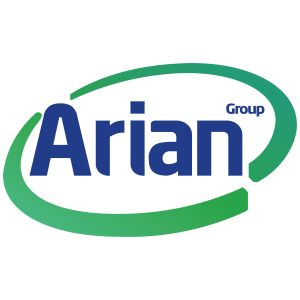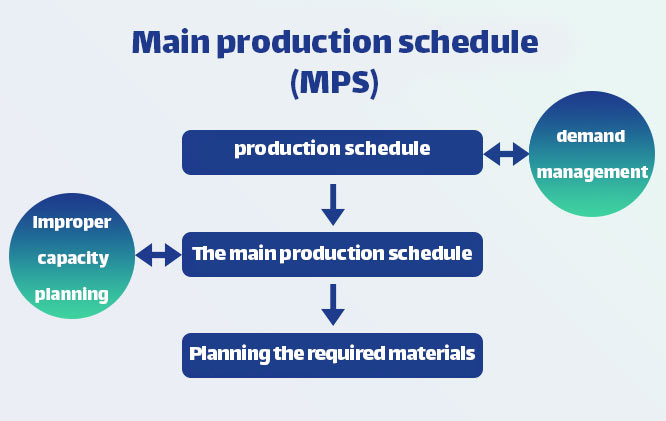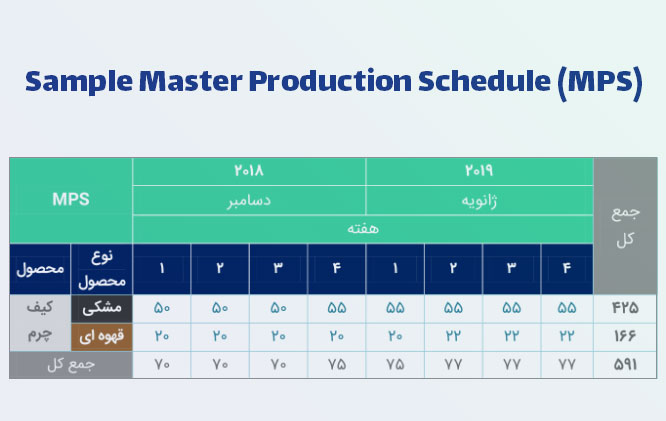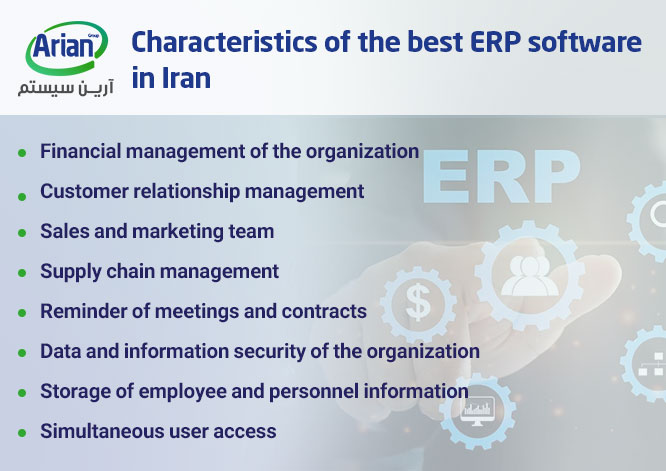Teaching production planning and MRP software like drinking water
What is the main production schedule of MPS?
Why should every company pay special attention to the main production schedule of MPS? Planning is one of the most crucial aspects of any task. Additionally, a significant part of work in the production process is production planning. The production planning process contributes to reducing production time and costs. Through precise planning and scheduling, accurate predictions of product manufacturing within specific time intervals can be achieved.
In this article, we will first discuss the main production schedule of MPS, the primary applications of the main production schedule of MPS, different components of the main production schedule (MPS), and the advantages of utilizing MPS. Then, an example of MPS utilization in a leather factory will be described.
What is the main production schedule of MPS?
When we plan to produce all products individually in short time intervals, the planning becomes more precise. In this type of planning, apart from the main product groups, each product is examined separately, and we create a plan for producing them.
This kind of planning is usually carried out on a weekly basis, and the output it provides us is referred to as the main production schedule. This way, we exactly know how many units of each of our products we will produce in each week.
Therefore, in a production unit, through the main production schedule of MPS, the quantity and timing of product manufacturing are determined over a specific period. In other words, the main production schedule defines what type of product, at what time, and in what quantity will be produced.

The main production schedule determines the quantity and timing of product manufacturing throughout a period.
The required product quantity for production usually consists of two parts as follows:
- 1. The amount of the product determined through orders received from customers.
- 2. The quantity of uncertain demand obtained through statistical forecasts.
In general, the main production schedule of MPS is an overarching plan for assessing the production of final goods in a manufacturing unit. When executed correctly, the main production schedule of MPS yields several results, including:
– Making necessary adjustments in the case of demand fluctuations.
– Enhancing the efficiency of the production unit.
– Effective cost control.
Primary Applications of the main production schedule of MPS
The main goal of the main production schedule of MPS is time-saving. As a result, the time spent on production management becomes more efficient, ultimately leading to the expansion of the manufacturing business. The other objectives of the main production schedule all align with achieving this goal. Before delving into the applications of production scheduling, if you are not familiar with production management, be sure to read the production management article.
Translation of Production Planning
With the assistance of the main production schedule of MPS, the quantity of production in a specific period is determined. This leads to proper management to create a balance among demand, workforce needs, and equipment capabilities.
Evaluation of Alternative Plans
Through the use of the main production schedule of MPS, different production methods are examined, and errors and issues in the production line are identified, ultimately selecting the most efficient production method.
The process of planning, directing, controlling, and organizing ongoing activities in a production unit to transform input resources into products is referred to as production management.
Production of the required capacity
Through the main production schedule of MPS, it becomes feasible to achieve the actual capacity needed to meet demand, increase profits, and minimize unit production costs.
Facilitating Information Processing
Using the main production schedule (MPS) and generating a timeline, reorder points for delivering goods to customers are set. This is achievable through the coordination between various management information systems such as marketing, finance, etc.
Demand Management and Supply
MPS helps companies predict customer demands more accurately and plan production in alignment with those demands. This ensures timely production and delivery of products to customers.
Resource Efficiency
With the main production schedule in place, raw materials, workforce, and equipment are allocated with greater efficiency. This leads to increased production efficiency and reduced resource wastage.
Cost Reduction
Through more logical production sequencing and optimized inventory management, production and inventory costs are reduced.
Responsive to Demand
MPS allows companies to accurately and promptly respond to customer demands, facilitating customer acquisition and retention.
Supply Chain Management
Using MPS, companies can establish better coordination in the supply chain, provide better information to stakeholders, and engage in more effective interactions with suppliers.
Reducing Sudden Changes
The main production schedule reduces the need for sudden changes in production and inventory management, enabling better adaptation to market changes for companies.
Improving Production Quality
By proper production sequencing and precise inventory management, the likelihood of producing low-quality products is reduced, leading to an improvement in production quality.
Which Industries Use the Main Production Schedule (MPS)?
In general, the main production schedule of MPS is utilized as a powerful tool for improving the order and coordination of processes and resources in any given industry. It is used to help industries achieve goals of efficiency, quality, and responsiveness to demand. In fact, the main production schedule (MPS) is not only employed in manufacturing companies but also across various industries and even service organizations. This method is employed to enhance planning and resource management to achieve production objectives, high efficiency, and responsiveness to demand. Some of the industries that utilize the main production schedule of MPS include:
Service Industries: In service sectors like transportation, postal services, technical services, and maintenance, the main production schedule helps managers optimize resource utilization and task allocation. For example, in transportation, routes and vehicle scheduling can be optimized using this method.
Healthcare Industries: In healthcare facilities, the main production schedule assists managers in optimizing patient appointments, scheduling, physician tasks, and medical staff arrangements. This can aid in responding to patient demands and improving service quality.
Financial Industries: In the financial and banking sectors, the main production schedule is used to manage workflow and process financial transactions. Improved scheduling can lead to reduced conflicts and enhanced accuracy in transaction processing.
Education and Research Industries: In universities and educational centers, the main production schedule is used to organize teaching programs, courses, allocated time for research projects, and other academic tasks.
Customer Service Industries: In customer-centric industries such as mobile or communication services, the main production schedule helps managers improve response times to customers and allocate resources for resolving customer issues.
Utilizing the Capacity of the main production schedule of MPS
Ultimately, the main production schedule of MPS determines the requirements for using machinery and equipment.
The additional objectives of the main production schedule of MPS are as follows:
- It leads to improving demand conditions.
- It reduces delivery lead times.
- It promotes standardization of communications in business.
- It aids in prioritizing needs.
- It contributes to maintaining stability in production.
- It creates executable plans for production orders.
Different Components of the main production schedule of MPS
The various components of the main production schedule of MPS include demand management, production planning, inadequate capacity planning, the main MPS itself, and materials planning. These components are illustrated in the image below.
To establish and organize a production calendar, a demand plan is required. Developing a demand plan necessitates accurate sales time information. This information is used to forecast and estimate demand for the upcoming week. The plan should be structured on a weekly basis.
Additionally, the creation of inventory reserves can be an effective strategy for handling unusual or high-volume orders. If demand increases, the order plan should be adjusted to prevent excessive stockpiling.
Consequently, each week, the demand plan is updated to create an accurate production calendar. This process is dependent on the main production schedule (MPS) plan.
A production unit must meticulously fine-tune the main production schedule of MPS and utilize it as a valuable tool for fulfilling business orders. The correct steps for creating a main production schedule (MPS) are as follows:
- Preparing and configuring a product checklist.
- Preparing and configuring sub-checklists for each product.
- Performing annual, monthly, and weekly planning.
- Planning for weekly production quantities.
Advantages of Using MPS
Considering that the main production schedule of MPS serves as a tool for demand forecasting, it brings numerous benefits to an organization. The most important advantages are outlined below:
- Improved Demand Planning: A better understanding of production cycles leads to more efficient and optimized demand planning.
- Ideal Inventory Levels: By examining production requirements, the optimal inventory level is determined.
- Human Resource Allocation: The production unit’s human resources department can be aware of the necessary requirements for production before actual production takes place.
- Material Capacity Optimization: The required material capacity can be optimized, preventing material stockpiling.
- Maintenance and Repairs: Being aware of the ongoing production volume allows for feasible maintenance and repairs on the production line.
- Estimated Workforce: The required workforce for future productions can be estimated.
- Enhanced Purchasing: MPS allows for the calculation of required materials for future production, leading to improved purchasing processes.
- Financial Projection: The financial department of the production unit can predict a suitable cash flow for the unit with the help of the main production schedule.
By utilizing the main production schedule of MPS, organizations can benefit from streamlined operations, better resource allocation, reduced wastage, and improved overall efficiency.
Effective Approaches for Main Production Scheduling
In general, main production scheduling (MPS) is recognized as a key factor in improving productivity and efficiency in the production process. Selecting appropriate methods for MPS depends on the characteristics and needs of your organization. Additionally, combining multiple methods can contribute to overall scheduling and production performance enhancement. Below, we highlight some effective approaches for creating a main production schedule:
Process Analysis: Initially, it’s essential to thoroughly analyze the entire production process. This analysis helps identify production stages accurately and select the best sequence for them.
Identifying Weak Points: Identifying weaknesses and delays in the production process can lead to significant improvements. Combining these weak points can result in an efficient schedule for the main production.
Use of Scheduling Software: Utilizing project management and scheduling software can simplify and enhance the accuracy of the scheduling process. These tools allow you to arrange production stages in your preferred order and create a more precise schedule.
Implementing Smart Production Methods: Techniques and methodologies like Lean workflow and Agile production can help optimize and streamline the production process.
Simulation Utilization: Simulation can help identify weaknesses and issues in the main schedule, allowing for necessary adjustments to improve the process.
Learning from Past Experiences: Previous experiences in manufacturing and scheduling can guide you in choosing the best methods. Learn from past mistakes and leverage successes.
Human Resource Management: Allocating suitable human resources with the necessary skills for controlling production stages and scheduling can have a significant impact on productivity.
Setting Priorities: Set priorities based on the importance and urgency of production stages to achieve the best production scheduling.
Continuous Monitoring and Updating: The main scheduling process is dynamic. Keep updates and changes aligned with shifts in the business environment and processes.
Team Collaboration: Production teams and managers should collaboratively determine the main production schedule and implement necessary changes actively.
By implementing these effective approaches, your organization can benefit from optimized production scheduling, increased productivity, and improved overall efficiency.
How to Schedule Production Processes Using Master Production Scheduling?
Producing a product relies on organizing and sequencing processes accurately. This is where the Master Production Schedule (MPS) serves as an efficient tool to help align and optimize these processes. In general, aligning processes with the master production schedule requires a precise approach, team coordination, and continuous updates. In this section, we provide tips and strategies for aligning processes using the master production schedule. By adhering to the following points, you can enhance production performance and increase efficiency.
Identifying Production Stages:
First and foremost, you need to identify all the distinct stages of the product manufacturing process. From the entry of raw materials to the delivery of the final product, each stage should be carefully pinpointed.
Assessing Time Requirements for Each Stage:
Thoroughly examine the amount of time needed for each production stage. This estimation allows you to focus on a more precise execution sequence of production stages.
Setting Priorities:
Identifying fundamental and critical production stages that require prioritization is highly crucial. Processes influencing the delivery and quality of the final product should take precedence.
Logical Sequencing of Stages:
Utilize the master production schedule to logically sequence production stages. This arrangement should lead to reduced interferences between stages and an overall improvement in production performance.
Resource Allocation:
Based on the master production schedule, determine the resources required for each stage. These resources encompass human labor, financial resources, and materials needed for each stage.
Consistency in Adjustments:
The master production schedule should be regularly updated and synchronized with changes in the business environment. Consider that conducting regular updates is a strength of your scheduling.
Utilizing Project Management Tools:
Utilizing project management software and tools aids in refining and monitoring the master production schedule. These tools provide more precise insights into the order and status of process stages.
Team Participation:
When aligning processes with the master production schedule, various teams must engage actively in this process. The experiences and insights of team members can contribute to enhancing the scheduling.
Continuous Management:
The master production schedule should undergo continuous management. Periodic evaluations and updates based on market changes and business environment contribute to better process alignment.
Enhancing Productivity and Optimization:
By applying a more precise order and alignment to processes, productivity increases, and the potential for optimizing overall production performance emerges.
Sample Use of MPS in a Leather Factory
A sample Master Production Schedule (MPS) for a leather handbag manufacturer is provided below. Note that for the sake of clarity and simplicity in this example, a production facility with two products, each having two variations, totaling four Stock Keeping Units (SKUs), is considered.
- The initial product inventory level is recorded.
- The forecasted demand is added below the inventory level.
- Ultimately, the production quantity is calculated based on the inventory level, demand, and current capacity.
It should be mentioned that SKU stands for Stock Keeping Unit, representing a unique inventory item. An SKU for a product can consist of one or more numbers and letters, or a combination of both. In other words, an SKU serves as a distinctive identifier for manufactured products. Its purpose is to differentiate one product from another within a manufacturing unit.
The above example is one of thousands of Master Production Schedule (MPS) schedules used in various businesses. The lack of flexibility in the plan and its inability to adapt to actual production orders and capacity constraints are among the negative aspects and drawbacks of the plan. Additionally, due to its use of Excel for design and data entry, it requires manual updates by the user. For this reason, manufacturers aim to implement dynamic and appealing MPS schedules using Manufacturing Execution Systems (MES) software. However, if you are considering acquiring a production scheduling system, it’s advisable to familiarize yourself with software purchasing tips before making a decision.
In addition to modern management systems, Manufacturing Execution Systems (MES) are utilized for data recording, operational control, and swift responses to system outputs. These systems are based on defined functions to provide real-time monitoring and immediate intervention on the production line. This enables the identification and halt of potential errors during production, ensuring efficient management alongside rapid problem-solving.
Example of Using MPS in a Manufacturing Company
Imagine a manufacturing company that produces a variety of electronic products, including mobile phones, televisions, and laptops. During a period of increased product diversity and customer demand, the company faces challenges in production sequencing, inventory management, and supply chain coordination.
To address these challenges and enhance the efficiency of production processes, the company decides to leverage MPS technology as an effective tool. Initially, accurate information about inventories, demand, and production capacity is input into the MPS system. This information is stored in the system’s database.
Subsequently, using optimization algorithms, the MPS system generates a production schedule in an appropriate order and configuration. This scheduling includes determining the sequence of producing products, the quantity of production in each time period, and optimal resource allocation for each product.
By utilizing MPS, a company can achieve the following objectives:
- Better Inventory Management: With accurate inventory adjustments and production sequencing based on demand, inventory levels are minimized and costs are reduced.
- Enhanced Supply Chain Coordination: Aligning production sequencing with demand increases coordination between production stages and the supply chain, reducing delays.
- Improved Efficiency: Optimizing production sequencing leads to increased efficiency of production machinery and equipment.
- Responsiveness to Demand: By sequencing production based on demand, a company can better respond to customer requests and deliver products on time.
- Reduction in Transportation Costs: Optimized production sequencing leads to decreased transportation costs.
As demonstrated by the mentioned example, it is evident that through the implementation of MPS, a company can achieve a well-ordered and well-adjusted production process, resulting in overall production improvement and advancements in efficiency, product quality, and responsiveness to demand. This experience illustrates how the use of MPS technology can aid in enhancing performance and achieving production goals for a company.
Conclusion
Production planning, scheduling, task prioritization, and proper execution of operations are crucial aspects for the success of an industry. In fact, the backbone of a manufacturing business lies in its main production plan or the Master Production Schedule (MPS). Without proper production scheduling, the risk of producing more or fewer products than current demand exists, potentially leading to damages for the company.
Therefore, in this article, an effort was made to briefly explain the main production scheduling, the application of MPS, the objectives of MPS, the benefits of production scheduling, and more. It is hoped that the provided information has been useful and practical for you. If you have any questions or comments about this article, please don’t hesitate to get in touch with us through comments.
The Concept of ERP from the Perspective of Experienced Accountants and the Best ERP Software
Implementing an ERP system can bring numerous benefits to organizations, such as improved efficiency, better decision-making, streamlined processes, enhanced collaboration, and real-time data visibility across departments. It’s crucial for organizations to carefully assess their needs and goals before selecting and implementing an ERP solution.
What is ERP?
What is the concept of ERP? Generally, the concept of ERP for a company and organization that intends to continue its business activities means planning for the resources of an organization. These resources are not limited to one section of the organization, but rather encompass all sections of the organization.
Now that we understand what the concept of ERP is and for what purpose it is implemented in organizations. let’s summarize the above content to make it more understandable. The concept of ERP represent an organizational module that assists the organization in its path ahead, including production, sales, invoicing, and more, and automates complex organizational tasks and collaborations, facilitating and expediting actions.
The Concept of ERP
Do you know the concept of ERP? Do you know what this term means? In the above section, we made a general reference, but now we intend to clarify the concept of ERP in more detail. The concept of ERP is understood as a software solution and tool that controls and manages the activities of different sections of a company within organizations. The result of these actions is the improvement of operational status and an increase of organization’s sales.
What is the abbreviation of ERP?
what words make up the abbreviation “ERP”? In this section, we intend to introduce the abbreviated letters of the ERP concept and explain the meaning of each one based on the type of business within your organization. The concept of ERP consists of the words “Enterprise Resource Planning,” .
The word “Enterprise” refers to an organization and company, “Resource” refers to assets and supplies and human capital of organization, and finally, “Planning” signifies arrangement, scheduling and assignment Companies use ERP software to help consolidate data from multiple departments across the entire business in to one centralized data base. It leads to better decisions and options for business owners and managers accordingly.
General Features of ERP Software
After explaining the concept of ERP, in this section, we want to address general features of ERP software. Later on, we will also looking forward to introducing the best ERP software options, making it easier for you to select for your organization. You can see the general features of ERP software in the image below.
The mentioned points are the general features of ERP software that all of them possess. Therefore, when purchasing a software, you should consult with ERP experts before making a software purchase.
How to Choose a Suitable ERP System?
To select an appropriate software, what steps need to be taken? The answer to this question is quite clear. As mentioned in the concept of ERP, in order to choose a suitable ERP software, you need to be aware of your company’s objectives and requirements. You must understand the purpose and direction for which your organization has been established, and which needs are on the path of development and progress.
If you intend to improve the operational performance of your organization and are familiar with the concept of ERP, you should choose the best ERP software for your organization. You can proceed by visiting the Arin System ERP Software page.
Only by knowing your organization’s requirements can you make the right choice. The second point that helps you choose a suitable ERP system is that if you are not familiar with the software and its functioning, do not make a hasty decision. Consult with experts and specialists in this field first. The third point is to identify reputable ERP software providers.
Features of the Best ERP Software
Enterprise Resource Planning (ERP) software are intelligent tools that aid companies and organizations in enhancing various processes, including finance, production, inventory, human resources, and customer management. By integrating data and processes across all organizational departments, these software assist in better decision-making and increased efficiency. In this section, we have outlined some key capabilities of ERP software.
Integration of Data and Information: ERP software have the capability to integrate data and information from various departments and processes. This feature aids in more accurate and informed decision-making.
Financial Management: ERP software provide comprehensive financial tools, including accounting, budgeting, income and expense management, and financial analysis.
Supply Chain Management: ERP software offer complete supply chain management capabilities, including order management, production, and inventory management.
Human Resources Management: These software enable comprehensive management of employee information, salaries and wages, employee hierarchies, and internal communications.
Customer Management: Customer management features in ERP software encompass order tracking, customer communication, and customer behavior analysis.
Analysis and Reporting: ERP software provide data analysis capabilities and accurate reporting for effective decision-making.
With these capabilities, ERP software enhance productivity, coordination, and alignment within organizations, aiding managers in making better and more accurate decisions.
Why Should We Choose the Best ERP Software?
What is the reason for selecting the best ERP software? To answer this question, we need to clarify the subject a bit for choosing the best ERP software. At the beginning of the article, we mentioned that ERP software controls and manages the product lifecycle, production units, orders, supply chain, and various departments of an organization. For this reason, ERP is referred to as a modular system.
Choosing the appropriate ERP software ensures that the software aligns with the organization’s needs. The most crucial step any organization needs to take is organizational resource planning to integrate the business. Only ERP can assist the organization on this path. Organizational resource planning aids managers in selecting the right path and making appropriate decisions.
Factors for Choosing the Best ERP Software
Selecting the best ERP software for an organization requires a thorough assessment and consideration of several important factors. Below, we have outlined the factors involved in selecting the desired ERP software.
Organizational Needs and Objectives:
First, you need to identify your organization’s real needs and objectives. Should the desired system cover all organizational processes or only a portion of them?
- Organization’s Scale:
You must ensure that the chosen ERP software can be scaled to accommodate your organization’s growth and alignment.
- Industry Alignment:
Some ERP software is designed for specific industries. You need to make sure that the selected software is compatible with your industry type.
- Compatibility with Existing Systems:
You need to examine whether your chosen ERP software can easily interact with the systems already present in your organization. It should also allow data exchange.
- Customization and Configuration Capability:
The software should offer the capability to be tailored to your organization’s specific needs, allowing you to configure unique processes and workflows.
- Appropriate User Interface:
The software’s user interface should be user-friendly so that users can easily navigate and utilize it. Working with the software should not be complicated or difficult for your organization’s users.
- Costs and Implementation Time:
Consider the software cost, implementation expenses, and the time required for its deployment so that it doesn’t disrupt your staff’s performance and efficiency.
- Support and Updates:
The software should come with reliable support and update capabilities to ensure it can incorporate new features in sync with industry changes.
- Security:
Data security and access to information must be well-established in the chosen software.
- Technical Requirements:
Technical requirements such as compatible platforms, supported databases, and required programming languages should also be taken into account.
In the end, choosing an ERP software requires a thorough examination and comprehensive comparison of various options available in the software market. Additionally, seeking advice from experts in this field and leveraging the experiences of other organizations can assist you in making this decision.
Benefits of the Best ERP Software for Businesses
Now we would like to mention several advantages of ERP software, so you can fully understand what an ERP system is. The following points will assist the company in navigating the path of growth and progress more easily.
If we were to introduce the advantages of using an ERP system for your organization in a few instances, the following points are just a few of the benefits of utilizing ERP systems for organizations. Each organization can utilize these advantages based on their needs and circumstances.
Integration of Processes: ERP systems allow managers to oversee all organizational processes in a unified set. This enhances coordination and coherence in decision-making and organizational performance.
Increased Efficiency: By optimizing and automating processes, the time and resources required for tasks are reduced, leading to improved efficiency.
Better Access to Information: ERP systems collect and provide information related to various departments and processes of the organization on a shared platform, increasing accuracy and trust in information.
Improved Decision-making: With access to up-to-date and analyzable data and reports, organizational managers can make better decisions and formulate business strategies.
Cost Reduction: High productivity, reduced repetition and errors, and enhanced resource management lead to a reduction in operational costs.
Error Prevention: These systems, by allowing access to data and precise control, assist in preventing mistakes and issues in processes.
Regulatory Compliance: ERP systems help organizations align with industry regulations and standards.
Real-time and Consistent Information: Changes in one part of the organization within the ERP system automatically affect other sections, ensuring information updates.
Enhanced Interaction and Communication: Improved access to information and increased internal interactions lead to greater collaboration and knowledge sharing.
Improved Customer Experience: Up-to-date customer information in the ERP system improves services and responsiveness to customer needs.
Values of ERP Software for Large Businesses
The structure of ERP is designed in a way that the organization’s information and data are placed within the ERP system. In fact, organizations can utilize this opportunity to integrate their business, leading to savings in both time and organizational resources. The most significant values of ERP software for enterprise resource planning are included in the table below:
| row | ERP Software Values |
| 1 | Viewing Financial and Accounting Matters |
| 2 | Organizational Procurement Control |
| 3 | Risk and Organizational Resource Management |
| 4 | Enhancing Employee and User Collaboration |
| 5 | Automatic Customization Capability |
| 6 | Task Automation |
| 7 | Invoicing Presentation |
In fact, ERP (Enterprise Resource Planning) software holds numerous values for large businesses that aid in enhancing organizational performance and management. In addition to the items mentioned in the table above, the following are other crucial values of ERP software for large businesses:
Process Integration: ERP integrates various processes, including finance, production, distribution, sales, and HR, within a unified environment. This fosters better coordination and improved decision-making.
Enhanced Data Accessibility: ERP software collects different information in a common database, providing users with easy access to data. This results in better data-driven decision-making.
Improved Efficiency: By optimizing and automating processes, ERP reduces the time and resources required for tasks, leading to increased efficiency.
Reporting and Analysis Consolidation: ERP software offers accurate and up-to-date information to managers through reports and analyses, facilitating strategic decision-making.
Cost Reduction: Improved productivity, reduced repetition, error reduction, and better resource management contribute to operational cost savings.
Error Prevention: Accurate process control and up-to-date data access minimize the likelihood of errors.
Human Resource Management: ERP software enables optimal human resource management, including recruitment, training, compensation, and performance evaluation.
Scalability: ERP systems need to be scalable with organizational growth, allowing for easy addition of new modules and accommodating changes.
Support for Strategic Decision-Making: By providing accurate data and reports, ERP systems empower managers to make strategic decisions based on reliable information.
Compliance with Regulations and Standards: ERP systems typically align with industry standards and regulations, helping organizations avoid legal complications.
In conclusion, ERP software assists large businesses in improving performance, productivity, and coordination, while also providing more accurate information for strategic decision-making by managers.
Tips for Selecting the Best ERP System
Choosing the best ERP system might initially seem a bit difficult and challenging, but with an understanding of the selection factors, you can easily have the best ERP system by examining the criteria and factors. Knowing these criteria will provide you with a deep insight and a broader perspective on your organization’s issues and capabilities. The tips for selecting the best ERP system include:
- Understand the ERP Market: This factor implies that you should recognize various types of top ERP software and consider using Cloud-Based systems. Examine the demand for ERP.
- Discover and Define Your Business Needs: In this factor, for the best ERP software, you must identify your organization’s goals and needs, allowing you to address the organization’s challenges.
- Create a General Outline of Your Core Requirements: An organization might have multiple objectives and needs. Therefore, before choosing the best ERP software, it’s better to have a comprehensive list of the organization’s core requirements prepared so you can make a more informed and profound purchase decision.
- Compile a List of ERP Software Providers: Why limit yourself to a single store? List organizations and companies offering the best ERP software and compare and scrutinize their products.
- Request Demos from Software Providers: Before purchasing and selecting ERP software from a provider, request a demo to have access to its functionality. This way, you can learn how to use the software and confidently make your purchase.
- Decision-Making: If you have completed the above steps, you can now negotiate with your organizational team to purchase the best ERP system that aligns with your business.
If you want to prevent your institution’s ERP planning system from encountering failure, we recommend reading the article “10 Early Warning Signs of ERP System Failure” for valuable insights.
Purchasing the Best ERP Software in Iran
We aim to prepare you for purchasing the best ERP software. We’ve outlined some features that were general characteristics of any software, and now we would like to mention several attributes of the best ERP software in Iran so that you can make a suitable and informed choice for your organization. You can see the features and capabilities of the best ERP software in Iran in the image below.
Purchasing Arian System ERP Software
After providing a comprehensive explanation of the ERP concept, it is now time to introduce you to the best ERP software. One of the top software options in this field is Arian System ERP, which effectively organizes and integrates organizations and companies. By purchasing Arian System ERP software, you can easily manage various aspects of your organization and save time.
ArianERP software, designed for large and medium-sized companies, comprehensively manages all organizational resources. Through various modules of the Arian System software, including business accounting, financial accounting, human resources, administration, production, the Modian system, maintenance, and repair, everything managers need to manage their organizational departments is provided. The process-centric nature of Arian System software automates many time-consuming tasks within the organization, giving managers complete control over all organizational affairs.
Some of the features that set Arian System ERP apart from its competitors include:
- Automatic issuance of accounting documents
- High information security and user-friendly interface
- Iranian ERP software complying with global standards
- Process-centric approach with professional form-building and reporting tools
- Provision of customized reports tailored to customer business needs
- Availability of Windows version for large organizations with infrastructure provisioning
- Availability of 2 web and cloud-based versions for unrestricted software access
- And more…
To purchase Arian System ERP software, you can get in touch with the company’s experts who can assist you in selecting the best ERP software. Some may wonder why they should invest in an ERP system. If you also have this question, we recommend reading the article “10 Reasons to Purchase an Organizational Resource Planning System.”
Conclusion
The concept of ERP for a company or organization intending to continue its business activities involves planning for the resources of an organization. These resources are not limited to a single department within the organization but encompass all sections. Departments such as human resources, production, assets, and more are included, aiming to enhance sales and achieve desirable outcomes for the organization.
In this article, we’ve explained the ERP concept and highlighted its features and benefits. Alongside elucidating the ERP concept, we’ve endeavored to introduce you to the best organizational resource planning software. This way, you can make informed decisions and enhance the state of your organization. If you have any opinions or questions, feel free to write them in the comments section.
here’s a summary of the article in 7 bullet points:
- ERP (Enterprise Resource Planning) involves planning resources across all organizational departments for improved outcomes.
- ERP is essential for businesses aiming to enhance efficiency, sales, and overall performance.
- The article introduces ArianERP as a top ERP software designed for medium and large companies in Iran.
- ArianERP seamlessly manages various organizational areas, such as HR, finance, production, and administration.
- Unique features of ArianERP include automated accounting documents and user-friendly interface.
- The software aligns with global standards and offers both Windows and web-based versions for flexible accessibility.
- The article concludes that understanding ERP and choosing the right software can improve organizational performance.
Feel free to ask if you need further information or clarification!








